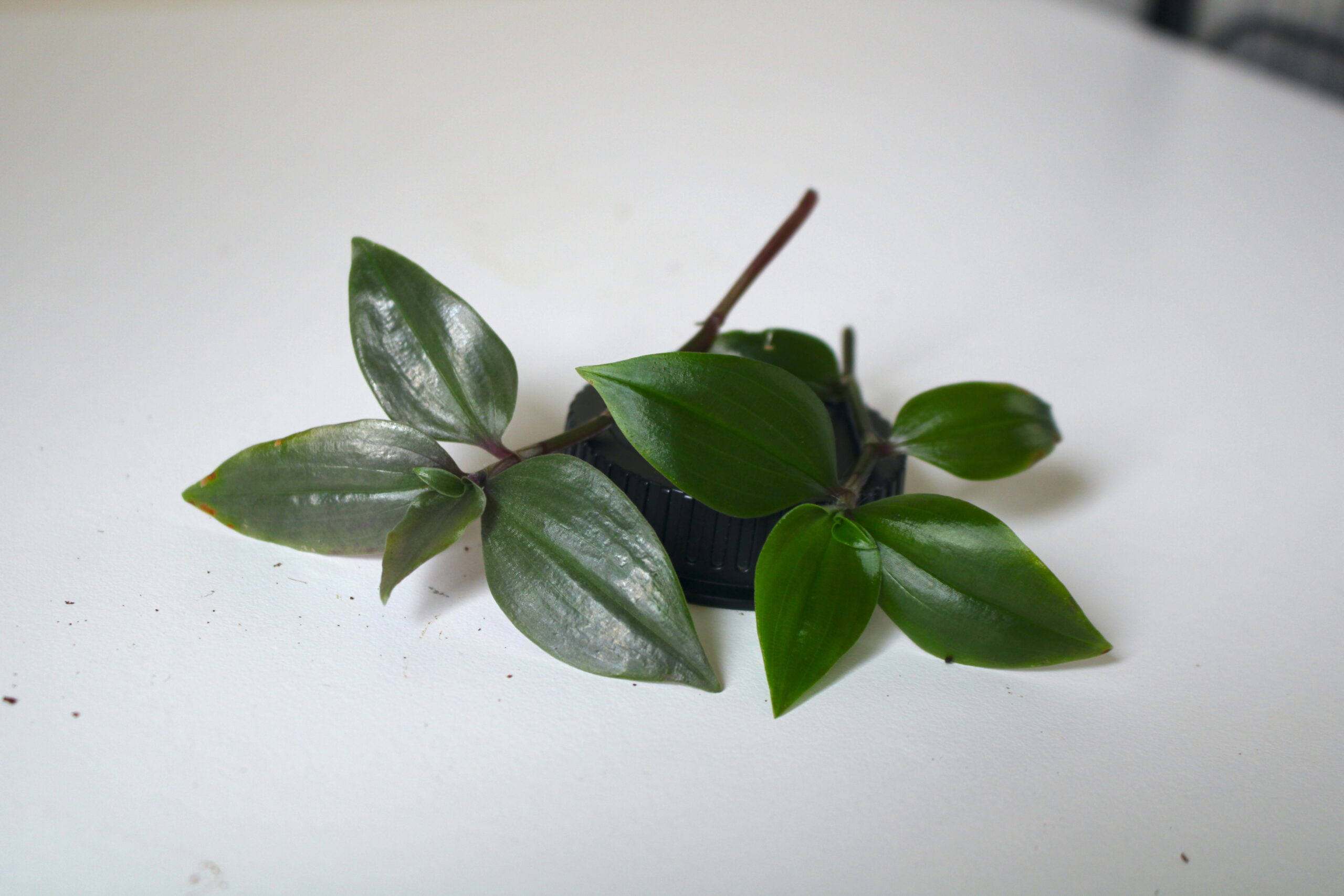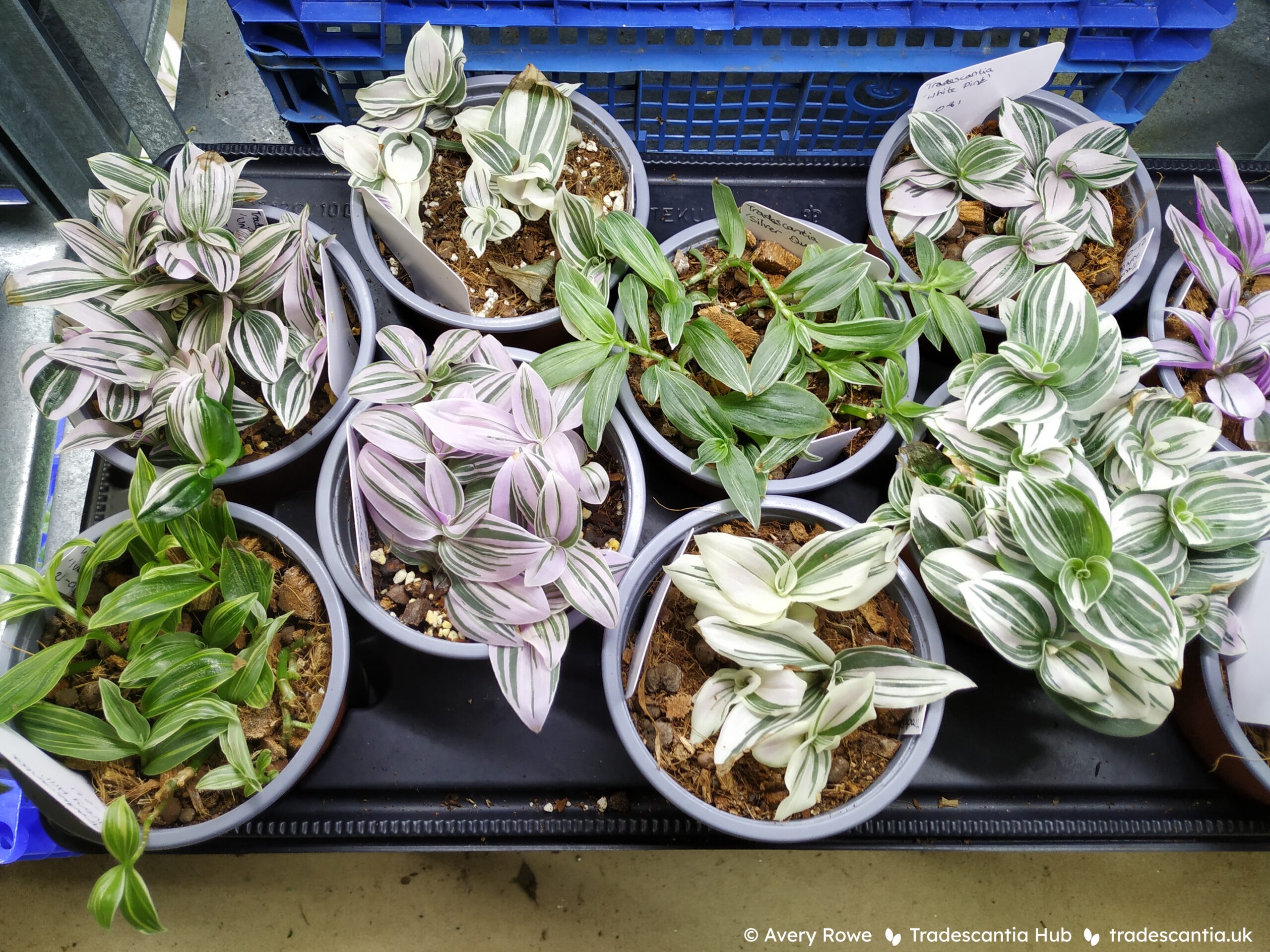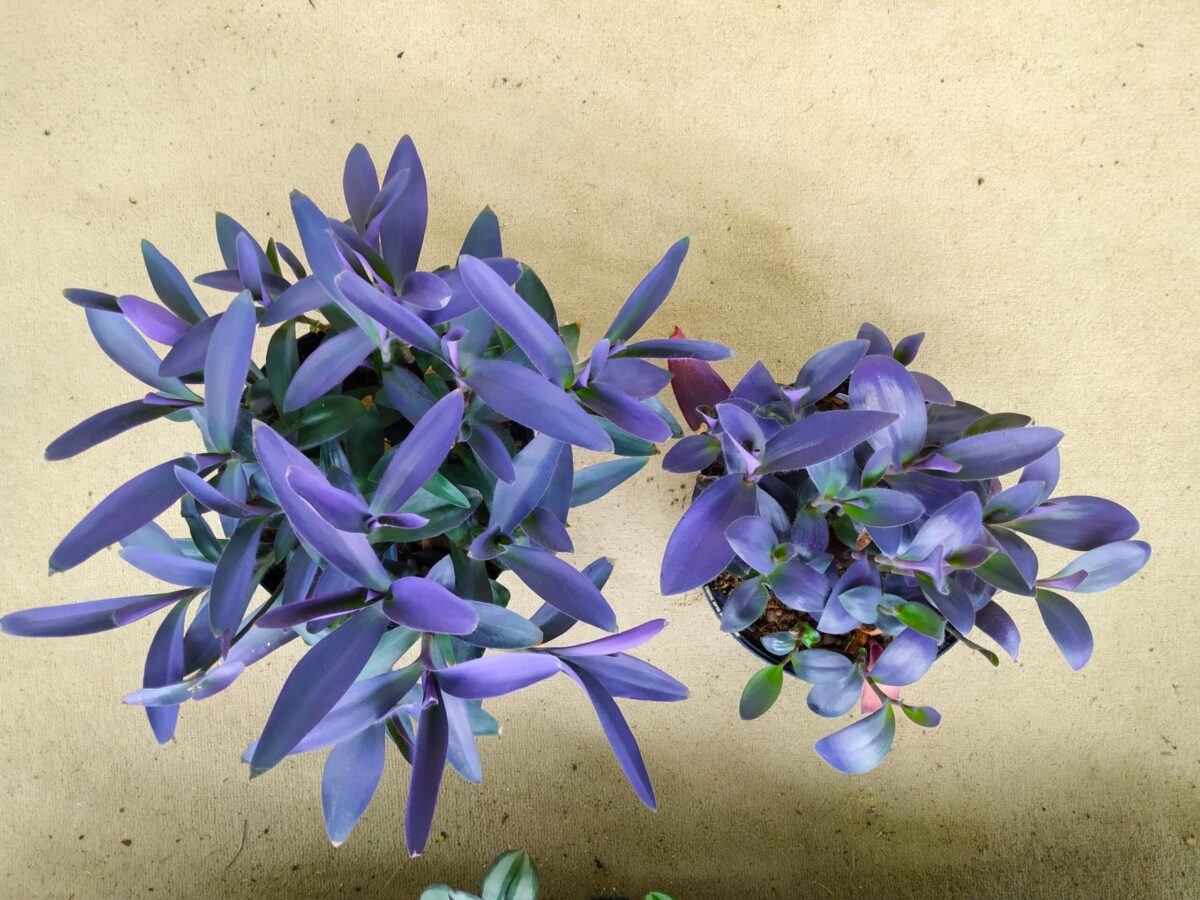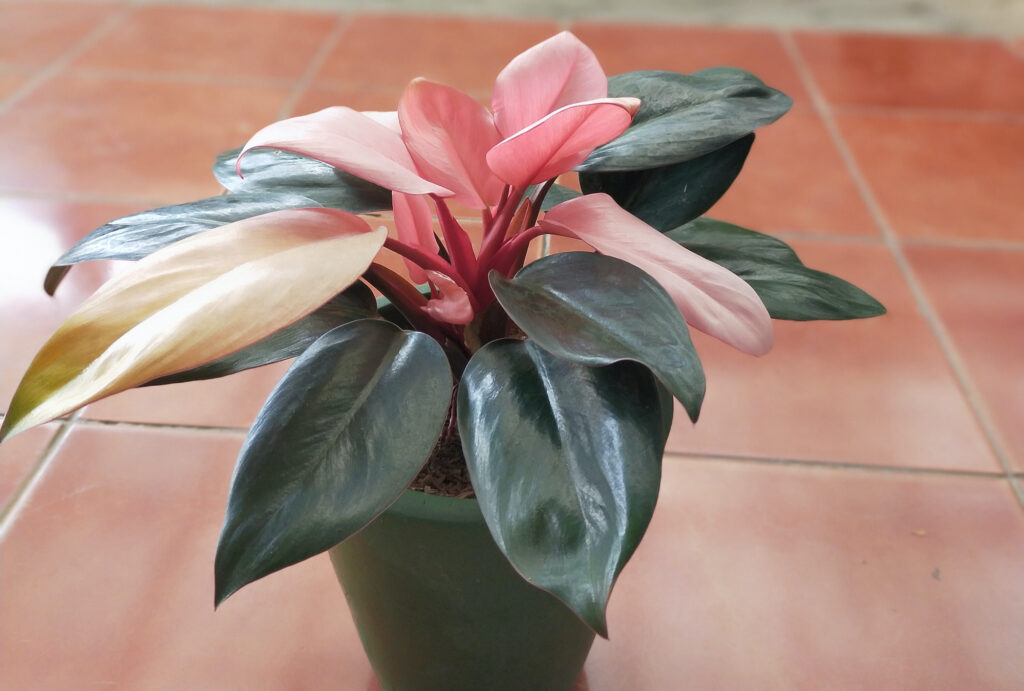It turns out the mysterious “grey” cultivar of T. pallida that appeared in the last few years, has actually existed since 2003, and its name is ‘Shadow Hill’!
Articles
Tradescantias are semi-succulents, which means they’re much more tolerant of drought than a lot of plants. It also means that they’re a lot less obvious about it when they eventually do get thirsty. Growing tradescantias as houseplants is very different from having “drama queens” like coleus, nerve plants, and polka dot plants.
Throughout history this name has been used in many different ways. There’s a lot of confusion and uncertainty over what plants it really refers to, or whether it should be used at all. This article will explain some of the history, the ways it’s currently used, and what’s scientifically accepted today.
In the world of cultivated tradescantias, there are some plants which people refer to as “wild type”. This is a pretty ambiguous term that doesn’t do much to help identify plants – the best approach in these cases is to use cultivar names instead.
You might have noticed some ‘Purple Heart’ plants look different to others. That’s because there are actually two different types!
Sometimes this plant is labelled as Tradescantia × andersoniana ‘Blushing Bride’, and sometimes it’s labelled as Tradescantia fluminensis ‘Maiden’s Blush’. But these names actually refer to two completely different cultivars!
This article is a plain english rewrite of the ninth edition of the International Code of Nomenclature for Cultivated Plants (ICNCP), which is the set of rules about how cultivated plants are named. Because it’s simplified, some information has been left out. This version is aimed at people who are naming new plants, or who […]
Some people have suggested the plant has symptoms of a viral infection. Some have even gone as far as to claim that the plant should be quarantined or banned from sale for fear that it’s contagious. Others have grown the plant for years and report no evidence of the symptoms spreading to nearby plants.
This is a topic that causes a lot of confusion, so I wrote this summary on correct and incorrect names in Commelinaceae!
If you’ve been interested in houseplants for more than a year or two, you probably already know the original “Pink Congo” story. A few years ago, a new plant called Philodendron “Pink Congo” came onto the scene. Its lower leaves are dark green, but the new leaves at the top are bright pink. It quickly became a wild hit among tropical plant enthusiasts and prices skyrocketed.








